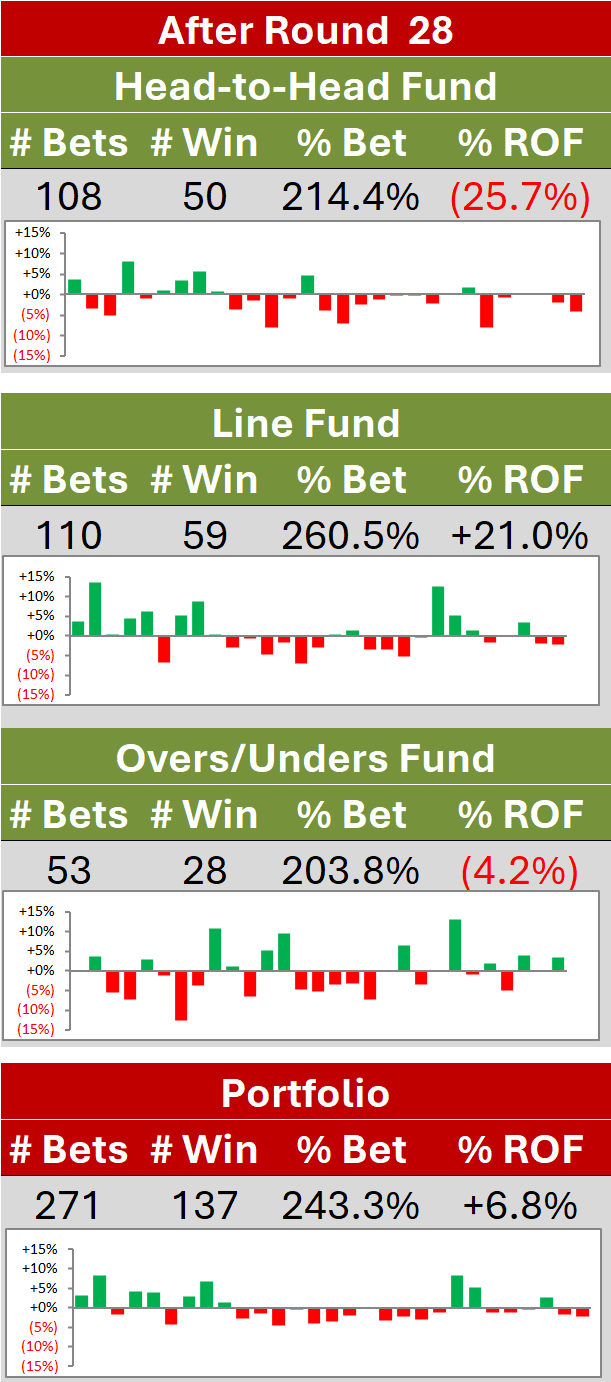Measuring Strength of Schedule in Terms of Expected Wins
/A few weeks back I analysed the men’s 2025 AFL schedule with a view to determining which teams had secured relatively easier overall fixtures, and which had secured relatively more difficult overall fixtures.
We investigated various approaches there and reached some conclusions about relative team fixture difficulty, but none of the methods provided an intuitive way to interpret the outputs.
On a related note, this week I had a kind email from a reader who suggested that there might be an opportunity to continuously update teams’ ‘fixture difficulty rating’ (which is just another term for strength of schedule) during the season, as this service was frequently provided by various fantasy leagues for English Football and other sports.
All of which got me to revisiting my strength of schedule methodology.
EXPECTED WINS
In the main, I’ve measured a team’s schedule difficulty based on an aggregate of the team ratings of the teams they face and the Venue Performance Values (VPVs) of those opponents at the relevant venues. In my preferred method, I’ve also included the VPVs of the team whose schedule I was assessing (the rationale for which I have laid out in that earlier blog).
This approach produces a clear ordering of the teams, and gives a feel for the relativities of the differences, but it doesn’t lend itself to an intuitive interpretation.
What, if, instead, we measured the difficulty of a match based on the probability that an average team would win it?
We can do this quite readily using the new MoSHBODS Team Ratings and Venue Performance Values.
As an example, for the first game of the 2025 season we have Brisbane Lions playing Geelong at the Gabba. The Lions’ Combined Team Rating (in standard deviations) is +0.645 and its VPV for the Gabba will be +0.387. Geelong’s Combined Team Rating is +0.273 and its VPV for the Gabba -0.117.
Looking at the game from Brisbane’s viewpoint firstly we have an expected margin for an average team playing Geelong at the Gabba as -0.273+0.117 = -0.156 SDs. The current SD for team scores over the past 5.5 years (which is the window MoSHBODS uses) is 24.7 points, so this translates to a margin of -0.156 x 24.7 = -3.8 points.
The last step is to convert this to a win probability, which we do by assuming a Normal distribution for game margins with a standard deviation of 35. That gives a win probability of 45.6% (or an expected wins value of 0.456).
If we choose to include the Lions’ VPV at the Gabba, obviously things are a little better and we have an expected margin of -0.156+0.387 = +0.231 SDs, or +5.7 points. That gives a win probability of 56.5% (or an expected wins value of 0.565).
We can use either 0.456 or 0.565 as our measure of the difficulty of this fixture for an average team (without or with the Lions’ VPV).
We can also look at the game from Geelong’s perspective and find that the relative expected win values are 0.234 and 0.209.
Note that the expected win values need not sum to 1 in either case, because neither team is playing an opponent with a Combined Rating that is the negative of their own, nor a team whose VPV is the negative of their own.
RESULTS
So, if we do that for all of the games in the 2025 fixture, where does that get us?
It gets us to the summary table at right, which shows, for example, that average teams facing the same schedule as North Melbourne and with 0 VPVs at every venue would be expected to win only 11.2 of the 23 games across the home and away season. That’s the third lowest total.
If we allow those average teams to take on North Melbourne’s VPVs at the various venues they would now be expected to win only 10.6 games, which is the lowest total for any of the 18 teams.
We can also see that North Melbourne itself, once we account for its Combined Rating, is expected to win only 4.7 games all season.
One interesting feature of this table is that the ordering in the far right column is almost identical to that in the Total Effective SOS column of the table headed Actual Schedule in the earlier blog.
So, we have the twin benefits of convergent validity and improved interpretation.
ROUND-BY-ROUND
In the table below I’ve broken down each team’s expected wins data on a round-by-round basis, and it is this table that I intend to update during the course of the season.
(Note that a larger version can be accessed by clicking on the image)
The only thing of mild significance I’ve added here is a summary remaining fixture difficulty rating, which is defined as follows:
Very Hard: average expected wins less than 0.475 per game
Hard: average expected wins between 0.475 and 0.49 per game
Average: average expected wins between 0.49 and 0.51 per game
Easy: average expected wins between 0.51 and 0.525 per game
Very Easy: average expected wins greater than 0.525
As always, comments and suggestions welcomed.

